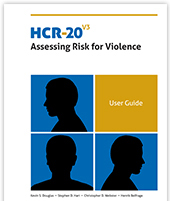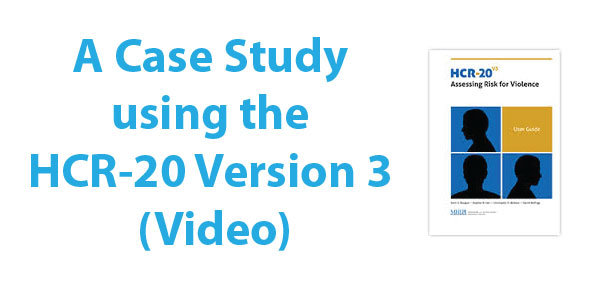 The HCR-20 is the most commonly used violence risk assessment instrument across 44 countries, with over 100 evaluation studies in 32 countries. Version 3 of the HCR-20 was released in 2013 and since that time professionals and organizations have begun the process of implementing Version 3 into their clinical practice and clinical service provision.
The HCR-20 is the most commonly used violence risk assessment instrument across 44 countries, with over 100 evaluation studies in 32 countries. Version 3 of the HCR-20 was released in 2013 and since that time professionals and organizations have begun the process of implementing Version 3 into their clinical practice and clinical service provision.
Administration and Development of the HCR-V3
Drs. Kevin Douglas and Stephen Hart (authors of the HCR-V3) have been training individuals and organizations on the development of the HCR-V3 as well as the Administration, Scoring, and Interpretation of this instrument and the structured professional judgment approach to threat assessment and risk management. Free videos providing an overview of these issues are available here.
Clinical Implementation Issues
At the International launch of the HCR-V3 in Edinburgh, Scotland in April 2013 Dr. Henrik Belfrage (also an author of the HCR-V3) spoke about the successful clinical implementation of the HCR-V3. This video is available here.
Case Study
Also at the International launch for the HCR-V3, Dr. Caroline Logan discussed a case study wherein she completed a risk assessment using the HCR-23 and spoke about the importance of using the HCR-V3 to structure the formulation of any case. In this video, she provides clinical examples and a description of the process of case formulation and consideration of relevant risk factors.
Professional Training on the HCR-V3
CONCEPT is pleased to offer a video-on-demand professional training program on the development, administration, scoring, interpretation, and clinical implementation of the HCR-V3. The training program takes approximately 20 hours to complete. Professionals are taken through the development of Version 3 and the rationale for revision and update of this instrument. The training program describes why and how the HCR-20 was revised, how Version 3 differs from its predecessors, initial research validation of the HCR-V3, what its risk factors are and how to rate them, how to formulate a case and engage in risk management planning using the HCR-V3. The program includes both didactic and interactive components and allows the opportunity to apply the HCR-V3 to a clinical case. More information on this professional training program is available here.








